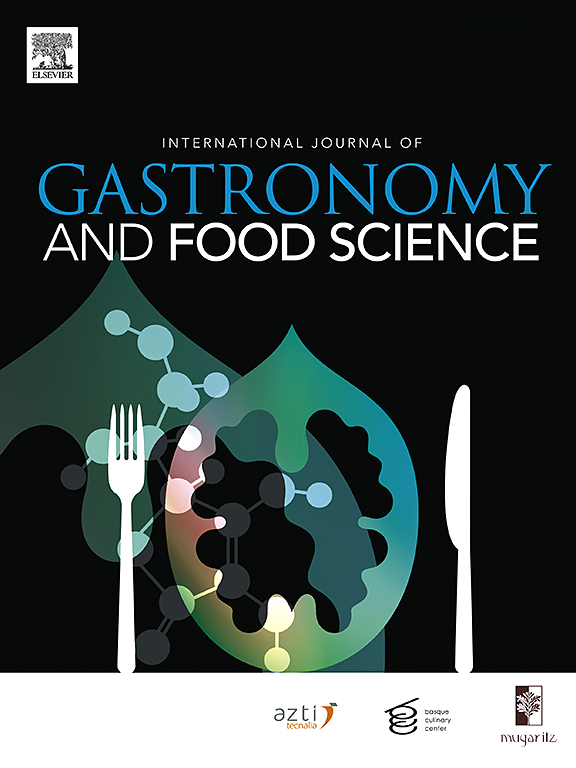A topological analysis of the space of recipes
IF 3.2
2区 农林科学
Q2 FOOD SCIENCE & TECHNOLOGY
International Journal of Gastronomy and Food Science
Pub Date : 2024-12-19
DOI:10.1016/j.ijgfs.2024.101088
引用次数: 0
Abstract
In recent years, the use of data-driven methods has provided insights into underlying patterns and principles behind culinary recipes. In this exploratory work, we introduce the use of topological data analysis, especially persistent homology, in order to study the space of culinary recipes. In particular, persistent homology analysis provides a set of recipes surrounding the multiscale “holes” in the space of existing recipes. We then propose a method to generate novel ingredient combinations using combinatorial optimization on this topological information. We made biscuits using the novel ingredient combinations, which were confirmed to be acceptable enough by a sensory evaluation study. Our findings indicate that topological data analysis has the potential for providing new tools and insights in the study of culinary recipes.
菜谱空间的拓扑分析
近年来,数据驱动方法的使用提供了对烹饪食谱背后的潜在模式和原则的见解。在这项探索性的工作中,我们引入了拓扑数据分析的使用,特别是持久同源,以研究烹饪食谱的空间。特别是,持久同源性分析提供了一组围绕现有配方空间中的多尺度“洞”的配方。然后,我们提出了一种基于该拓扑信息的组合优化方法来生成新的成分组合。我们用新的配料组合制作饼干,感官评估研究证实了这种组合是可以接受的。我们的研究结果表明,拓扑数据分析有可能为烹饪食谱的研究提供新的工具和见解。
本文章由计算机程序翻译,如有差异,请以英文原文为准。
求助全文
约1分钟内获得全文
求助全文
来源期刊

International Journal of Gastronomy and Food Science
Social Sciences-Cultural Studies
CiteScore
5.30
自引率
10.50%
发文量
170
审稿时长
45 days
期刊介绍:
International Journal of Gastronomy and Food Science is a peer-reviewed journal that explicitly focuses on the interface of food science and gastronomy. Articles focusing only on food science will not be considered. This journal equally encourages both scientists and chefs to publish original scientific papers, review articles and original culinary works. We seek articles with clear evidence of this interaction. From a scientific perspective, this publication aims to become the home for research from the whole community of food science and gastronomy.
IJGFS explores all aspects related to the growing field of the interaction of gastronomy and food science, in areas such as food chemistry, food technology and culinary techniques, food microbiology, genetics, sensory science, neuroscience, psychology, culinary concepts, culinary trends, and gastronomic experience (all the elements that contribute to the appreciation and enjoyment of the meal. Also relevant is research on science-based educational programs in gastronomy, anthropology, gastronomic history and food sociology. All these areas of knowledge are crucial to gastronomy, as they contribute to a better understanding of this broad term and its practical implications for science and society.
 求助内容:
求助内容: 应助结果提醒方式:
应助结果提醒方式:


